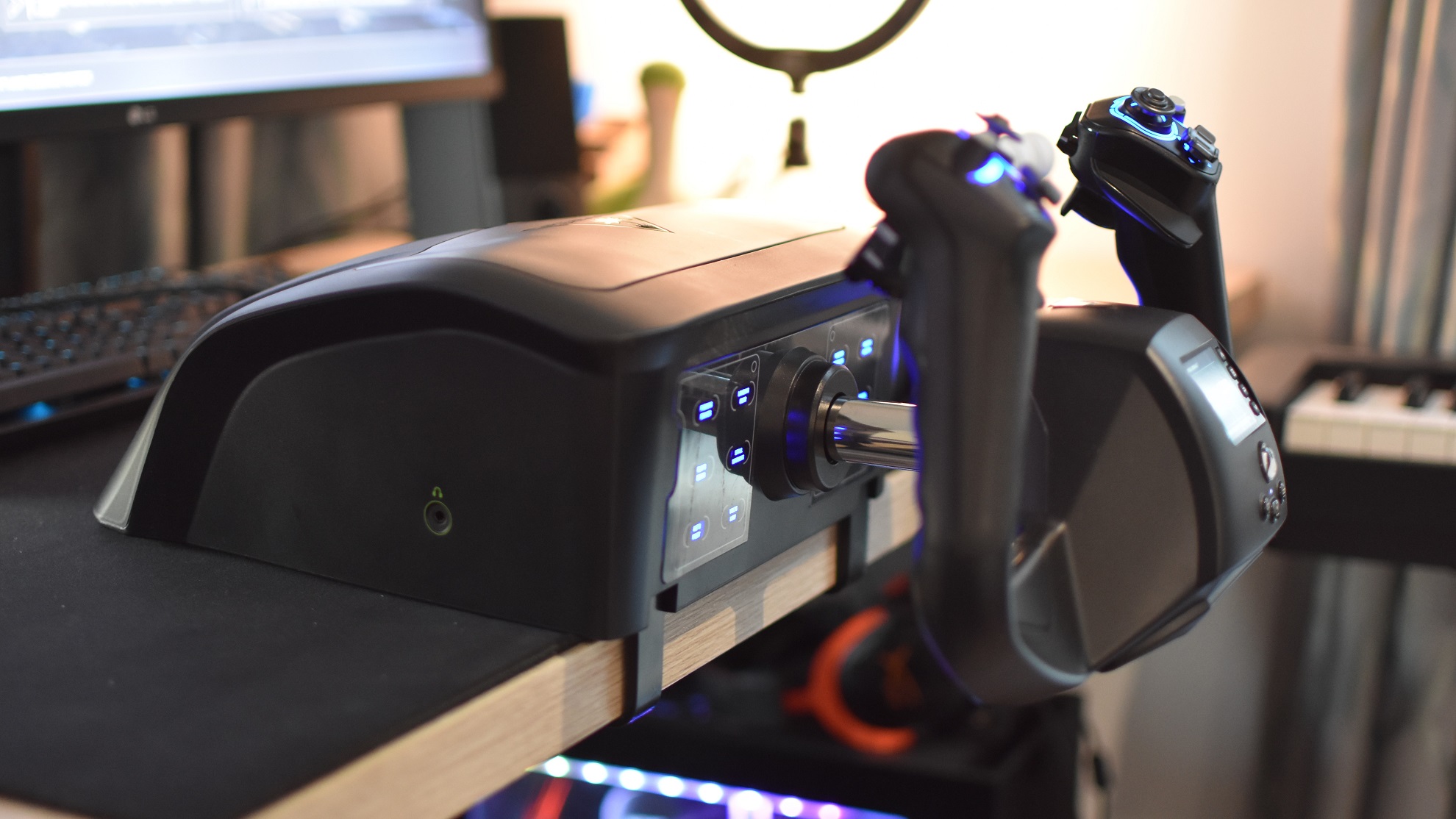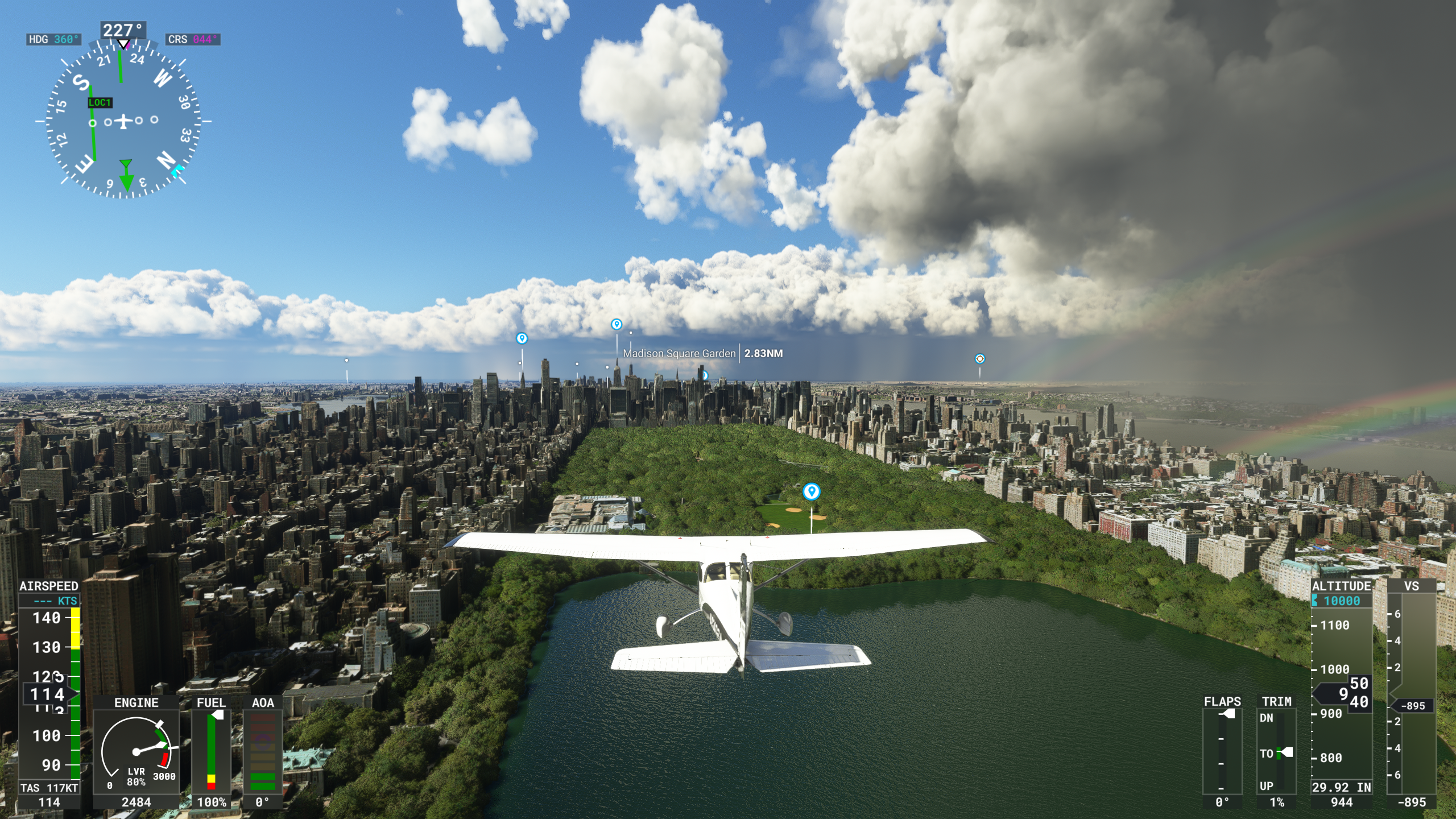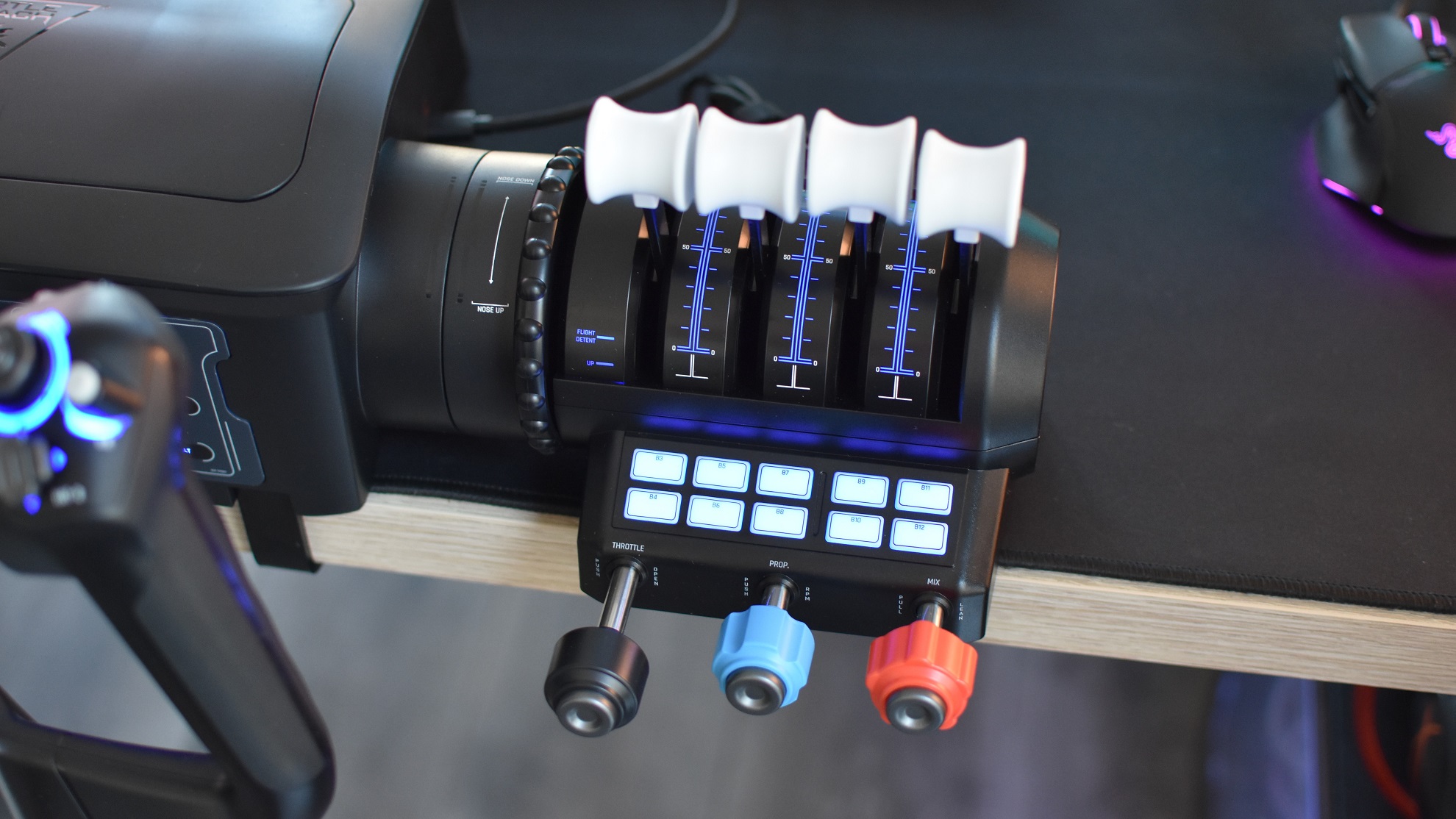In Microsoft Flight Simulator, obviously, but this honking great console of handles, buttons, joysticks and levers definitely looked like the right tool for the job. A simple flight stick this is not: there’s a full 180-degree yoke handle, an integrated display that can data like flight times, and a modular (but included as standard) throttle quadrant. The kind of thing you might own if your PC resembles a bisected turbine. I’m clearly not enough of a Planes Guy for this to qualify as a proper review, though I will say that for all of its sim-yness, I appreciated how accessible the VelocityOne Flight can be. It’s got a set of bog-standard Xbox inputs on the yoke itself, so anyone remotely familiar with that particular brand of console gamepad can navigate menus more easily, and almost every individual control is labelled – something that isn’t as common among flight controllers as you might think. It’s easy to set up, too, with the throttle module clicking effortlessly into place and all cables being standard USB or USB-C. I also like how the table clamps drop down from within the console and are tightened from above, so there’s no big low-hanging screws to bang your legs against. Sadly, clever desk clamps weren’t enough to prevent my first Flight Simulator lesson going poorly, as the game (will people get mad if I call it a game?) apparently judged me incapable of looking out a Cessna’s windows. After several minutes of spinning in my tiny pilot’s chair, glaring through every inch of glass but never completing the tutorial’s “look around” objective, I decided to quit out and skip to the tutorials that start in the air. Much like how I’ve been skipping the theory sections in my piano book. This was a mistake. With precisely zero flight hours under my belt and an unfamiliar means of control, my attempts at the more complex aerial manoeuvres – like turning, or staying level – bordered on the criminally negligent. Twice, while attempting to simply climb a few thousand feet without snapping my plane in half, my unseen but unimpressed instructor had to take the controls and force a restart. Even so, none of this was the VelocityOne Flight’s fault. There are fairly stiff detents in the yoke’s turning and pulling mechanisms that made ultra-granular movements difficult for me, but once I got used to the fact that flight instruments need a more delicate touch than an Outrun 2 machine’s steering wheel, things started to click. It helped to take a break from the instructor and free-fly over some of my favourite cities, feeling out the yoke at my own pace. I did, eventually, need to return to school in order to learn take-off and landing procedures. But it was the former where, yoke in hands, the pilot fantasy finally started to resonate: whether it’s in a quaint single-engine or a modern airliner, sliding in the throttle, tip-tapping the rudders and slowly drawing back the yoke all just feels so much more satisfying than when you’re adjusting the same controls mid-flight. And it would take a truly blackened heart to gain no pleasure in guiding forward the thrust lever, a roar slowly rising from the engines in sync. It’s a sensation that just won’t come off as well with the click and drag of a mouse. It’s a bit of a shame, then, that the VelocityOne Flight isn’t more attainably priced. At £350 / $380 it’s the opposite of an entry-level gadget, regardless of how easy it is to set up and use. And while that won’t be as much of a problem for serious sim enthusiasts, I can’t help but wonder if that money should at least pay for some higher-quality building materials; the module’s levers and knobs, in particular, feel more Fisher-Price than aerospace grade. I still like it, though. And I like learning how to plane in Flight Sim, perhaps more than I thought I would. Especially after the windows incident.


